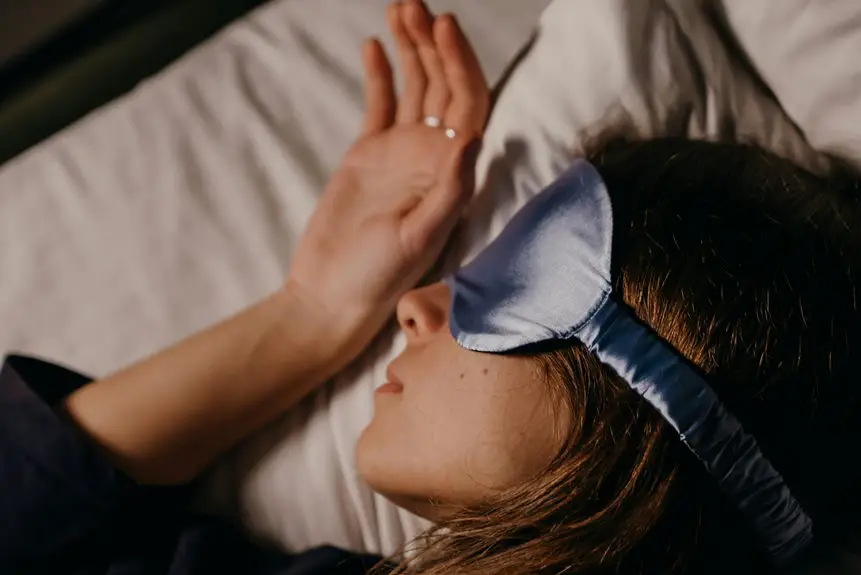Choosing the right fabric for your sleeping bag can make or break your comfort during a cold night outdoors. While nylon is lightweight and durable, polyester offers a budget-friendly alternative. However, these fabrics also come with their own pros and cons. Understanding these differences will help you make an informed choice when the temperatures drop. What other factors should you consider to guarantee a warm and restful sleep?
Table of Contents
Key Takeaways
- Choose nylon for its lightweight, durable, and water-resistant properties, ideal for cold weather sleeping bags.
- Opt for down insulation for superior warmth-to-weight ratio, but ensure it has a waterproof shell to maintain insulation when wet.
- Consider synthetic insulation for moisture resistance and warmth retention, making it a good choice for damp conditions.
- Box baffles in sleeping bags provide better insulation and heat retention, perfect for colder temperatures compared to other baffle types.
- Select a water-resistant outer layer made from nylon or polyester to enhance durability and protect against moisture during cold nights.
Understanding Sleeping Bag Fabrics
When it comes to choosing a sleeping bag, understanding the fabrics can make all the difference in your comfort and warmth.
You’ll typically encounter nylon and polyester, each offering unique benefits. Nylon is lightweight, durable, and resistant to water, making it ideal for wet conditions. Polyester, on the other hand, is often more affordable and offers decent insulation, but it may not be as breathable.
Nylon is lightweight and water-resistant, while polyester is budget-friendly and provides decent insulation but less breathability.
Look for ripstop fabrics if you want added durability against tears. Pay attention to the finish as well; a DWR (Durable Water Repellent) coating can help keep moisture at bay.
Ultimately, selecting the right fabric can enhance your outdoor experience, allowing you to stay cozy and dry during those chilly nights under the stars.
Insulation Materials for Cold Weather
Insulation materials play an essential role in keeping you warm during cold weather camping trips.
When choosing a sleeping bag, you’ve got two main options: down and synthetic insulation. Down insulation offers excellent warmth-to-weight ratio and compressibility, making it an ideal choice for backpacking. However, it loses insulating properties when wet, so you’ll want a waterproof shell if you go this route.
On the other hand, synthetic insulation is moisture-resistant and retains warmth even when damp, making it a reliable choice for unpredictable weather. While synthetic bags tend to be bulkier, they’re often more affordable.
Ultimately, your choice depends on your camping style, budget, and the specific conditions you expect to face on your next adventure.
The Importance of Baffle Types
When choosing a sleeping bag, the type of baffle design can greatly impact your insulation’s performance.
Different baffle styles affect how well heat is retained and how evenly insulation is distributed.
Understanding these differences helps you select a bag that meets your specific needs for warmth and comfort.
Efficiency of Baffle Designs
Baffle designs play an essential role in the overall efficiency of sleeping bags, as they directly influence how well insulation materials retain warmth.
Different baffle types, like box or vertical, affect the distribution of insulation, minimizing cold spots. When you choose a sleeping bag, consider how the baffle design can enhance heat retention.
For instance, box baffles create individual compartments, allowing insulation to loft fully and trap more air. On the other hand, vertical baffles can be lighter and more compressible, but may not hold warmth as effectively.
Insulation Performance Comparison
While choosing the right sleeping bag, understanding how different baffle types impact insulation performance is essential. Baffles are the compartments that hold insulation in place, and their design plays a vital role in heat retention.
You’ll find two main types: sewn-through and box baffles. Sewn-through baffles are lightweight and compact but may allow cold spots due to less insulation in certain areas.
On the other hand, box baffles trap more air, providing better insulation and reducing cold spots, making them ideal for colder conditions.
Consider your needs—if you’re braving the chill, prioritize box baffles. Ultimately, selecting the right baffle type can make all the difference in keeping you warm and comfortable on those cold nights.
Evaluating Outer Layer Properties
The outer layer of a sleeping bag plays an essential role in determining its overall performance and durability. When evaluating the outer fabric, consider water resistance, breathability, and tear strength. A good water-resistant fabric will keep moisture out while allowing sweat to escape, keeping you dry and comfortable.
Look for materials like nylon or polyester, which are lightweight yet durable. Also, check the denier rating; higher numbers indicate stronger fabrics. If you’re camping in harsh conditions, opt for ripstop fabrics to prevent small tears from spreading.
Finally, think about the fabric’s weight; lighter materials are easier to pack but may sacrifice some durability. Balancing these properties will help you choose the best outer layer for your cold-weather adventures.
Choosing the Right Liner Materials
Selecting the right liner materials can greatly enhance your sleeping bag’s comfort and warmth. When choosing a liner, consider fabrics like polyester or nylon, which are lightweight and quick-drying. These materials wick moisture away, keeping you dry during cold nights.
If you prefer a softer touch, look for cotton or fleece liners, as they add extra coziness but may retain moisture.
Additionally, think about the temperature rating of your sleeping bag. A thicker liner can provide added insulation for colder conditions, while a thinner one is ideal for milder weather.
Don’t forget to check for breathability, as this helps regulate your body temperature. Ultimately, the right liner material can make a significant difference in your overall sleeping experience.
Factors Affecting Sleeping Bag Performance
Liner materials play a part in your sleeping bag’s overall performance, but several other factors can impact how well it keeps you warm and comfortable. Insulation type, for example, determines heat retention; down provides excellent warmth but loses its loft when wet, while synthetic fibers perform better in damp conditions.
Here’s a quick look at how these factors stack up:
| Factor | Impact on Performance |
|---|---|
| Insulation Type | Affects warmth and weight |
| Temperature Rating | Guides your choice for cold nights |
| Bag Shape | Influences heat retention |
| Weight & Packability | Affects ease of transport |
Frequently Asked Questions
How Do I Clean and Maintain My Sleeping Bag?
Imagine your sleeping bag as a trusty companion on adventures. To keep it fresh, wash it gently in cold water, use a front-loading machine, and air dry. Regular maintenance guarantees it stays ready for your next journey!
Can I Use a Sleeping Bag in Summer?
Yes, you can use a sleeping bag in summer! Just choose a lightweight, breathable option designed for warmer temperatures. It’ll keep you comfortable without overheating, ensuring you enjoy your outdoor adventures even in the heat.
What Is the Lifespan of a Sleeping Bag?
The lifespan of a sleeping bag typically ranges from 5 to 15 years, depending on usage and care. You should regularly inspect it for wear and properly store it to maximize its longevity.
How to Choose a Sleeping Bag for Backpacking?
Choosing a sleeping bag for backpacking isn’t overwhelming. Focus on weight and insulation type. Consider the season and temperature ratings to guarantee comfort. You’ll appreciate a good night’s sleep after a long day on the trail.
Are There Sleeping Bags Specifically for Children?
Yes, there are sleeping bags specifically designed for children. They’re smaller, often feature fun colors or characters, and provide the right insulation for little ones, ensuring they stay warm and comfortable during their outdoor adventures.





